O.bilunulata
was first described from Alpes-Maritimes, France by Risso as long ago
as 1844 and its initial common name was the Two-mooned Orchid, a reference to the shape
and pattern of its speculum.
This species is a member of the ten strong O. fusca group and has a Western Mediterranean range from Southern Spain, including the Balearic Islands, through Southern France and into the Liguria region of Northern Italy. O. bilunulata is one of the commoner Pseudophrys and although it is strictly a plant of alkaline substrates it is far less fussy about other habitat considerations. It will grow in full sun or quite heavy shade in just about all types of terrain, from dry scrub and garrigue to lush grassland and pinewoods.
This is a distinctive orchid and one of it's striking characteristics is its colourful appearance (at least by O. fusca group standards) which is due in part to the (usually) broad yellow border of the lip and the way in which the lateral lobes are held away from the median lobe, forming large triangular sinuses. O. bilunulata is not a large plant and as can be seen from picture three, its flowers, which are equally modest in size, tend to be clustered towards the top and hang at an angle either almost or completely horizontal to the stem.
This species is a later flowerer than other western Mediterranean Pseudophrys and even in its more southerly stations it doesn't appear until at least the beginning of April. In the more northerly parts of its range it will not be at its best until early May and may still be found in flower at the end of June.
This species is a member of the ten strong O. fusca group and has a Western Mediterranean range from Southern Spain, including the Balearic Islands, through Southern France and into the Liguria region of Northern Italy. O. bilunulata is one of the commoner Pseudophrys and although it is strictly a plant of alkaline substrates it is far less fussy about other habitat considerations. It will grow in full sun or quite heavy shade in just about all types of terrain, from dry scrub and garrigue to lush grassland and pinewoods.
This is a distinctive orchid and one of it's striking characteristics is its colourful appearance (at least by O. fusca group standards) which is due in part to the (usually) broad yellow border of the lip and the way in which the lateral lobes are held away from the median lobe, forming large triangular sinuses. O. bilunulata is not a large plant and as can be seen from picture three, its flowers, which are equally modest in size, tend to be clustered towards the top and hang at an angle either almost or completely horizontal to the stem.
This species is a later flowerer than other western Mediterranean Pseudophrys and even in its more southerly stations it doesn't appear until at least the beginning of April. In the more northerly parts of its range it will not be at its best until early May and may still be found in flower at the end of June.
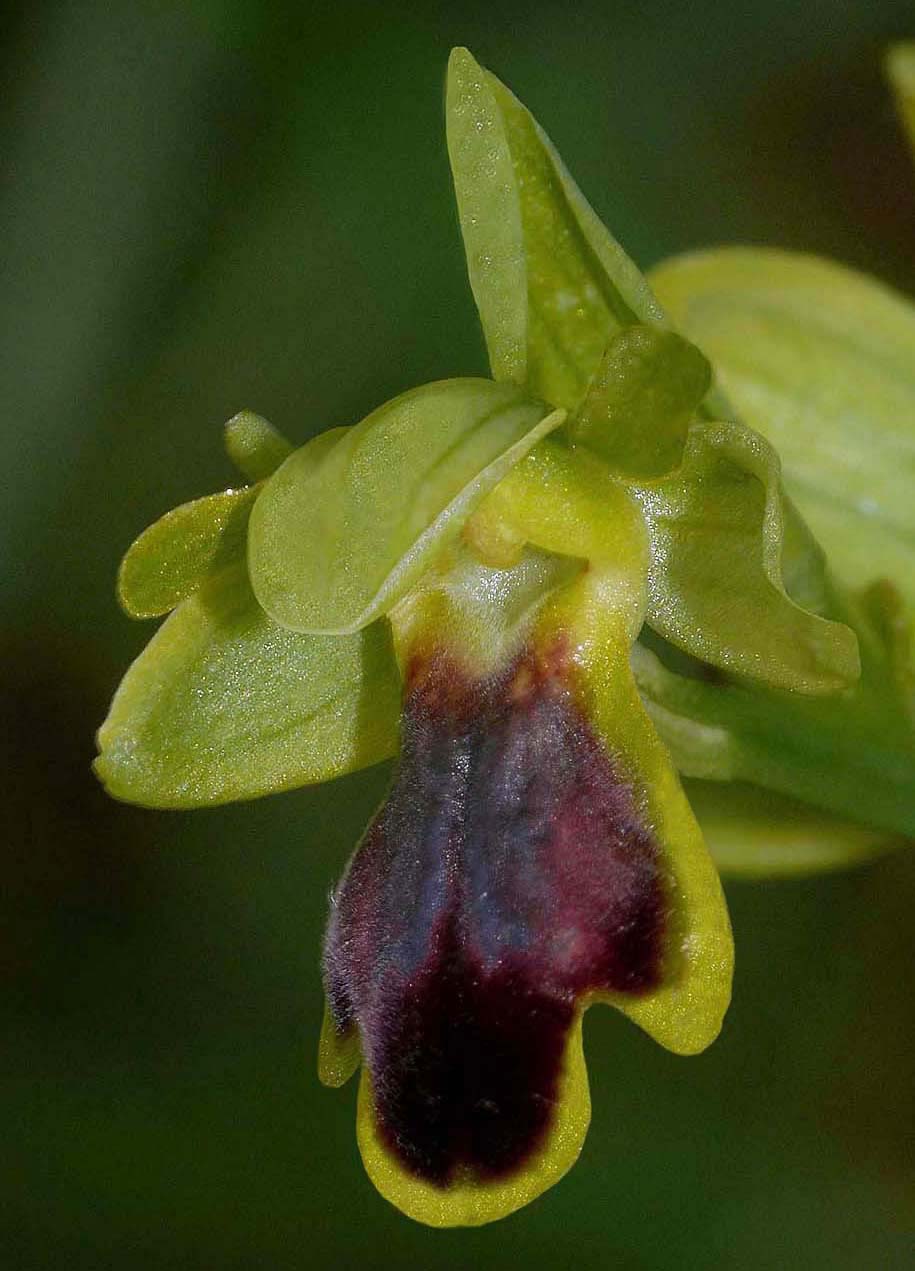
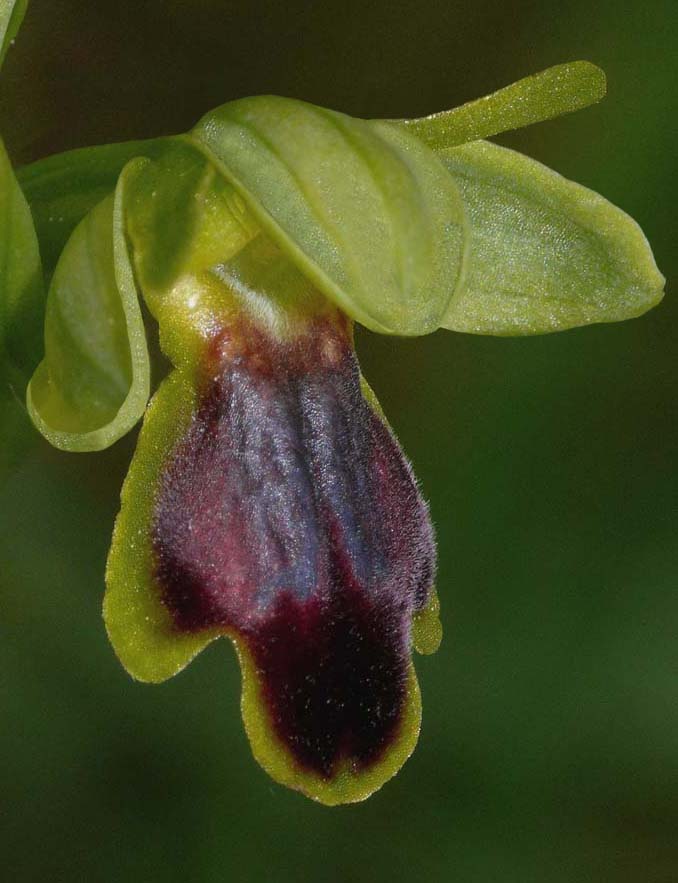
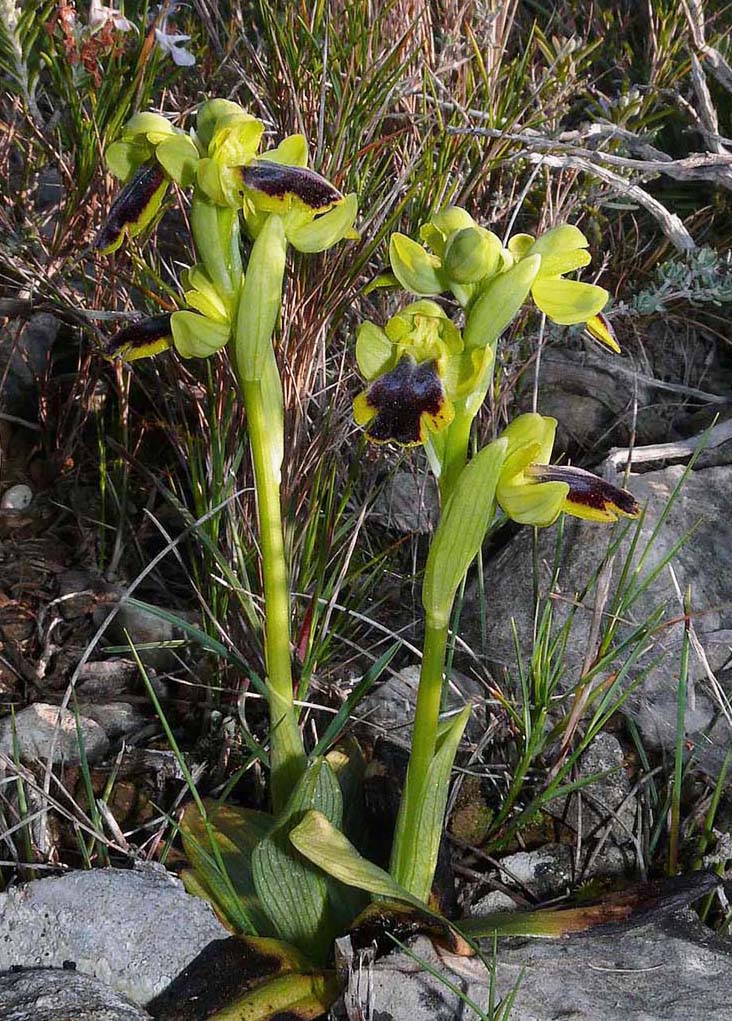
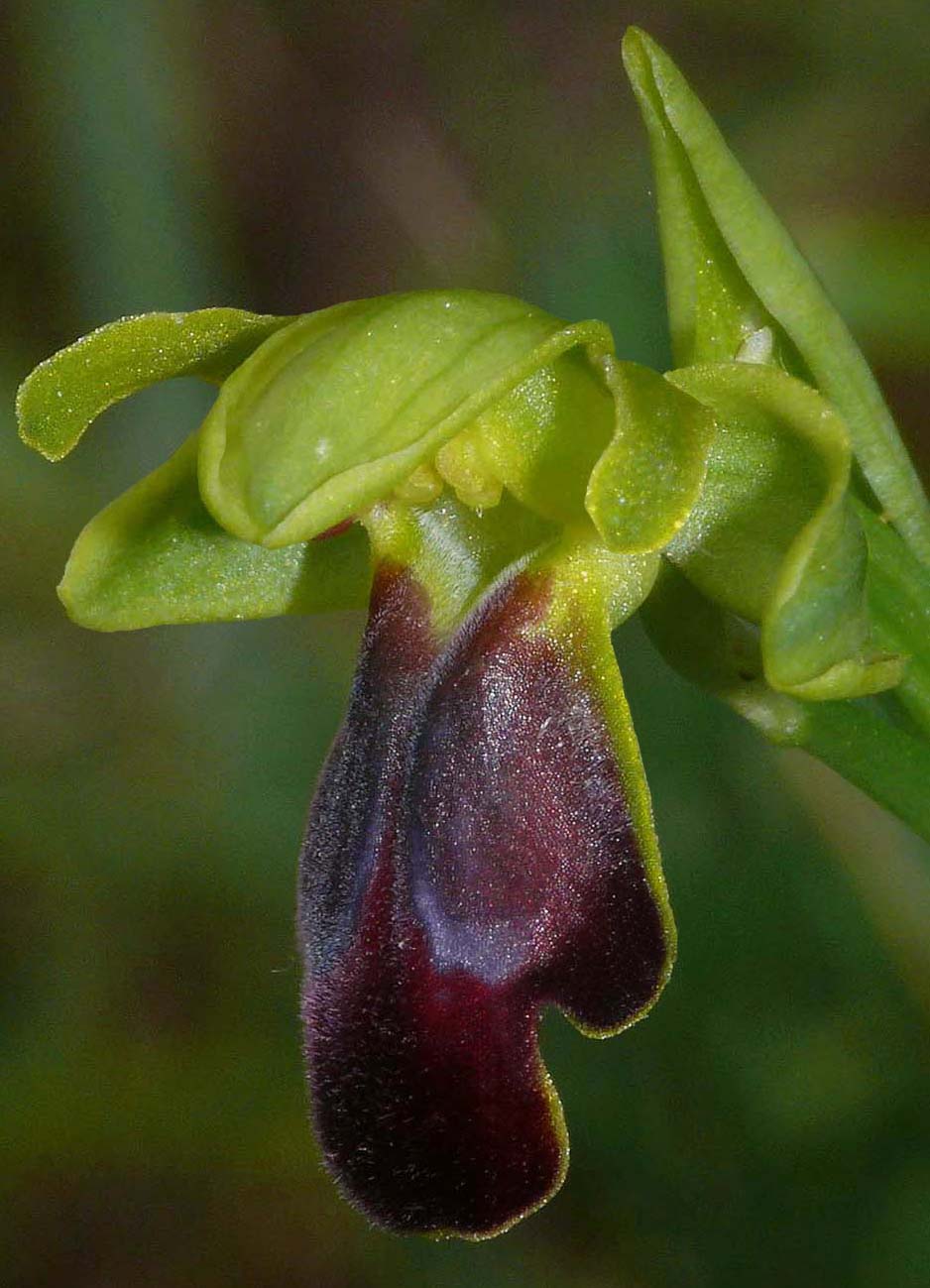
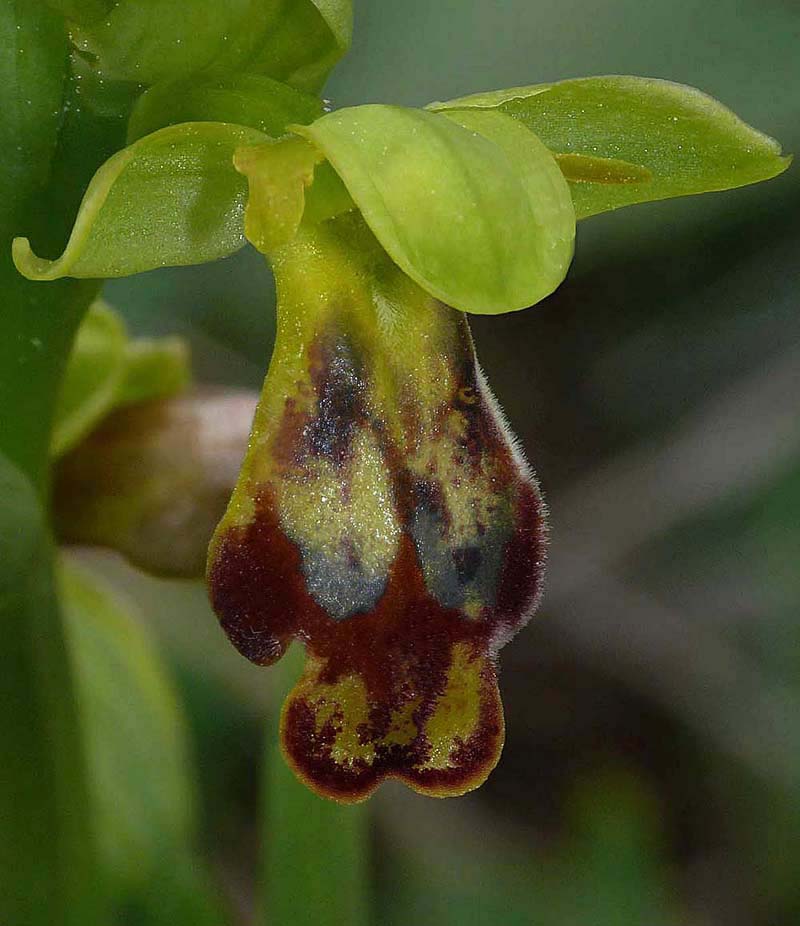
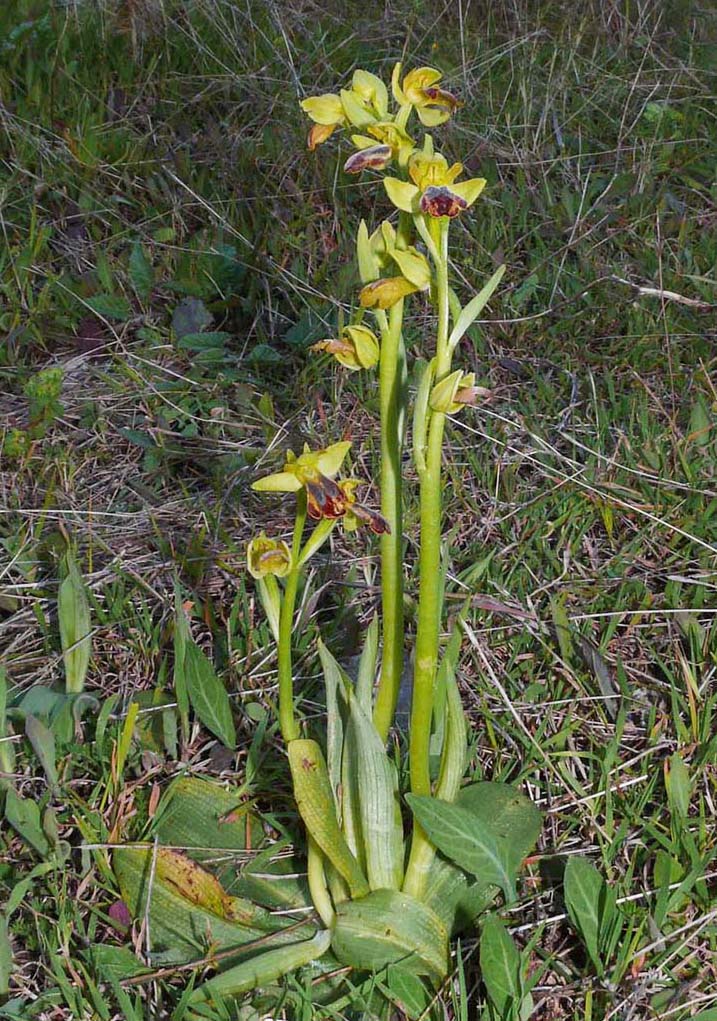
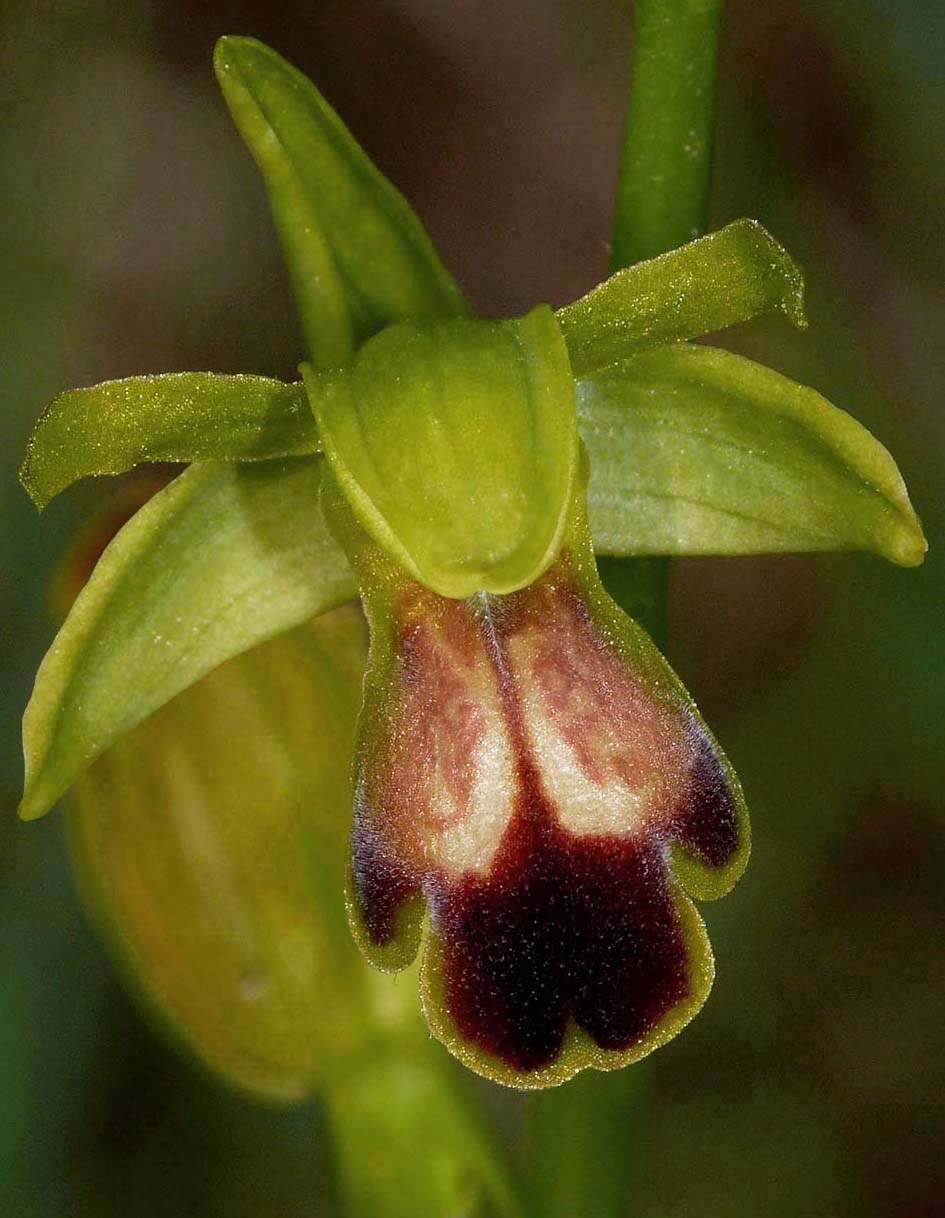
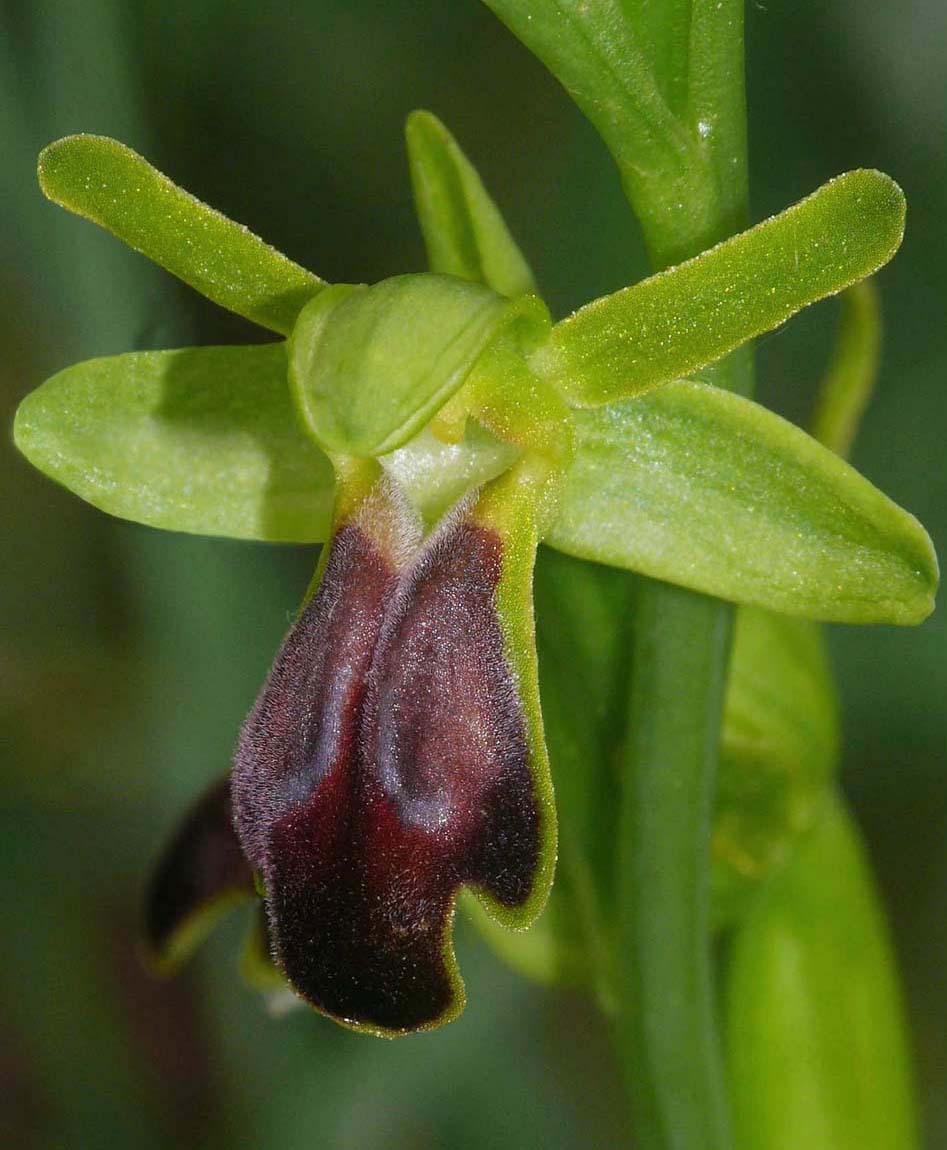
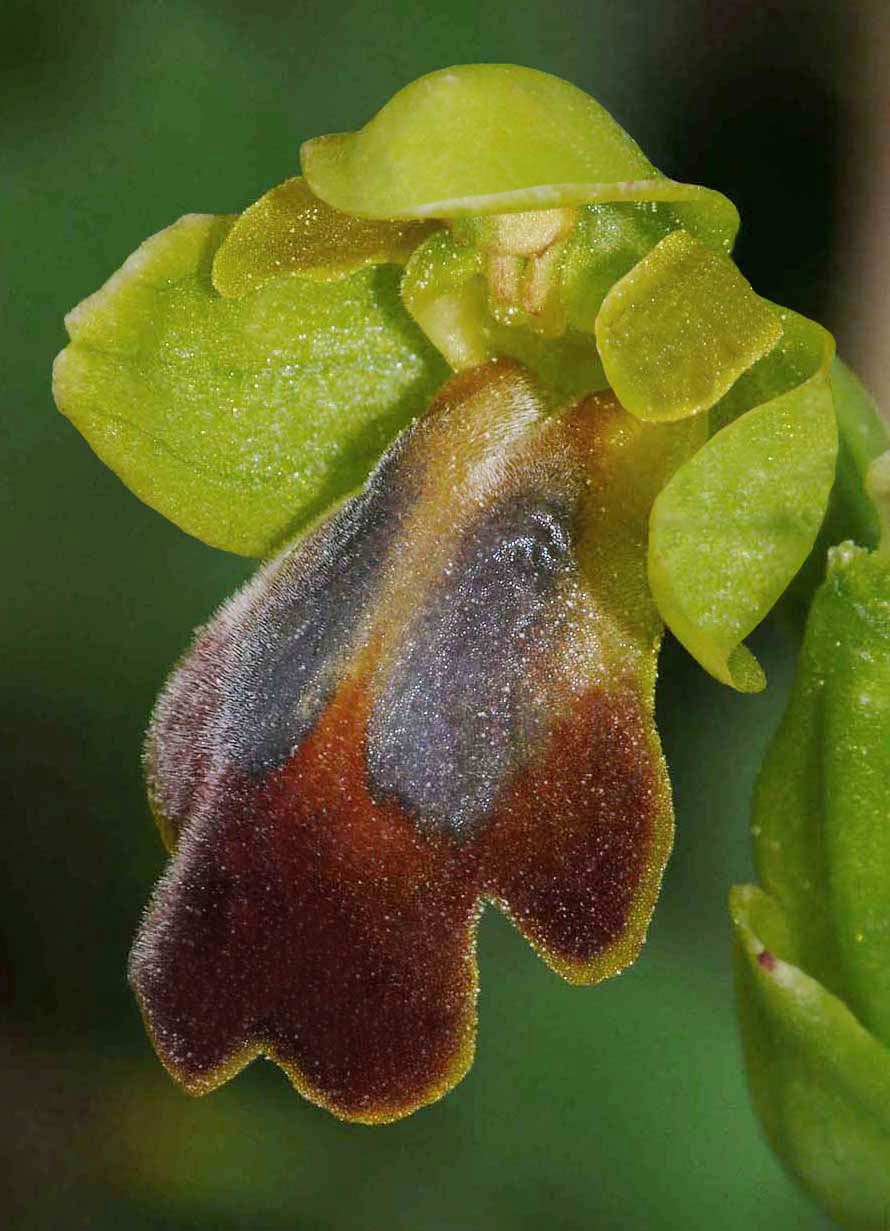
.